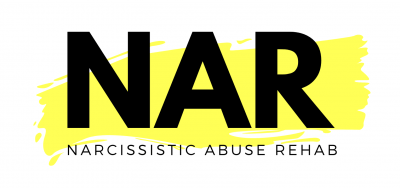THE BUZZ OF MY SMARTPHONE broke my concentration. I picked it up and checked my messages. A grief-stricken family member had texted me to let me know my cousin Francis had died.
Frantic phone calls ensued as I struggled to come to terms with my shock and sorrow. A hidden heart condition had claimed his life. He died five days before Christmas. His funeral would take place in Massachusetts in the New Year.
I was heartbroken to find that I could not attend. Fortunately, technology made it possible for me to mourn with my family from a distance. Francis’ sister and I texted on WhatsApp, and she kindly sent me updates so that I could feel like I was part of the gathering.
After the service, she sent me a photograph of herself standing next to the open casket. I saw my late cousin’s body, resplendent in a tailored ivory suit, carefully arranged in peaceful repose.
At first, the image overwhelmed me, and I shut my eyes to shield my mind from the painful reality that he was gone. My first impulse was to delete the photo.
When I opened my eyes and looked again, I saw his sister standing bravely by his side among the countless floral wreaths that surrounded around him. I realized how happy Francis would have been to see how cherished he was and the tenderness that went into celebrating his life. From that perspective, the image began to give me a sense of comfort.
A Memento Mori
The photo reminded me of my finite existence and put many things into perspective. Instead of deleting it, I kept it as a memento mori.
Memento mori is a Latin phrase that means “remember death,” or “remember you must die.” It refers to works of art that recognize the ephemeral nature of the material world and encourage focus and meditation on the afterlife.
These artworks became widespread when the Great Plague swept through Europe during the Renaissance. The concept reverberated in literature, paintings, and song.
As technology evolved, so did the memento mori. The invention of the camera made it possible to immortalize and preserve images of deceased loved ones. This became a popular art form in the Victorian era.
I was a child the first time I saw a memento mori. My grandfather and my mother were organizing our family archives and discovered a postmortem image of one of our ancestors. My grandfather was disgusted and threw it away.
That memory became especially poignant this year. As I write this, Francis has been gone for four months, and I still have the postmortem photograph stored on my smartphone. I don’t sit and stare at it but it’s somehow comforting to know it’s there, especially as the world navigates the uncharted waters of COVID19.
Its existence is not something I discuss with anyone. Occasionally, I find myself wondering about the emotional significance of keeping a memento mori. I can’t decide if it is a healthy, unorthodox or macabre custom. For answers, I turned to clinical psychologist Dr. Michael C. Kinsey, author of ‘Dreams of Zugunruhe’ and founder of Mindsplain.com.
Why are memento mori images a source of comfort for the bereaved?
Human beings are both sensory and social creatures. The way we learn that we exist is by being seen by others. When we’re upset, we’re comforted by being held. Knowing that someone is “there” for us is a core element of being able to explore the world. Over time, the process of knowing ourselves and finding comfort becomes more and more autonomous and abstract. We represent ourselves and experiences of others instead of directly perceiving them. John Bowlby, the founder of attachment theory, called these representations “internal working models.”
Internal working models are built around experiences, and experiences are built around the senses. Pictures give us something to look at and hold when someone is gone – no matter whether the separation is temporary or permanent.
I think that looking at – and perhaps holding – pictures help us to make representations of the absent loved ones feel more immediate. They comfort us by giving us a rich sensory experience to scaffold our memories and procedural representations of that person.
I have an especially strong childhood memory of my grandfather’s disdain of postmortem photography. There is still a part of me that feels leery about the appropriateness of the memento mori image. Maybe because it was taken on a smartphone and transmitted to me via social media. Is this a normal response?
That’s interesting. My hunch is that funerals are a communal and social way of coping with grief, where tradition and sacred values are at the forefront of the experience. Snapping a photo with a phone may feel analogous to facing the back wall in a crowded elevator. That is a violation of norms at a time when there is a strong social imperative to submit to them.
In the Alejandro Amenábar film ‘The Others,’ memento mori images were used to excite horror and awe in the audience. Yet, there are Facebook groups dedicated to antique postmortem photographs, where they are regarded as things of beauty. What is behind the allure of such images to people who aren’t related to their subjects?
Human beings are remarkable in our ability to create complex, abstract ideas and concepts. However, the more abstract, the less personal, immediate, and emotionally salient. Seeing a dead body is a profoundly impactful image. I think a corpse is incredibly evocative because of the way it’s both “real” in a material sense, yet devoid of any of the social emissions we expect. There are no facial expressions, noises, rhythmic breathing, fidgeting. It’s an uncomfortable feeling to encounter a “person” that is lacking the capacity to relate to others and the ambient environment in the way we expect of an entity so defined by its capacity to connect and attune.
In short, the conspicuous absence of the person within the body is emotionally striking, thus giving it stronger influence over our attention. When an emotion is strong enough to capture our attention, we are forced to deal with our feelings. We experience the heaviness of the moment, we imagine the life the deceased person lived, we search for meaning in life and death.
In your opinion, do you consider memento mori images a healthy custom?
It’s not a question of health vs. not healthy. Grief and loss are something we process collectively and personally. As you point out, at times communities have used pictures as a way to process loss. There could be any number of personal reasons why you might want to take a photo that is not based on shared meaning.
I might speculate though that taking a picture of a dead person is much more of a “just in case” type of measure. It’s a last chance to see someone in the flesh, and taking a picture could be a precaution against feeling some type of regret. From a logical perspective, there is no reason to consider a final moment with a body to be more important than any of the moments we had with a person when they were alive. But psychologically speaking, last moments are among the most salient in memory and therefore carry added pressure to make optimal use of them.
Do you think the Victorian practice of memento mori images as an art form can serve as an aid for mourners, especially in the age of COVID19?
I’m sure creative people could make wonderful use of death portraiture to deal with personal experiences of loss and to say something both meaningful and relatable about impermanence and the human condition. As far as the psychology literature goes, there was an interesting study done by a colleague of mine about “coming to terms with” death. Her study examined the effects of death on the people who work around dead bodies in Varanasi, India–a place where many Indian people come to die or bring deceased loved ones. The hope was that the people who encountered death every day would achieve a deeper peace with and acceptance of death. The findings were essentially that people who work around death every day respond to it in basically the same way that everyone else does. An interesting and important null result. The study was the dissertation of Sylvia Fernandez at The New School for Social Research.
This interview has been edited and condensed. It is syndicated at Medium.com.
Follow Dr. Kinsey on Twitter and at Mindsplain.com. His books ‘Dreams of Zugunruhe’ and ‘Transcendent Parenting: A Workbook For Parents Sharing Children With Narcissists,’ are available on Amazon.com.
NAR’s Journalistic Standards and Practices • About NAR • Report Typo or Error.






